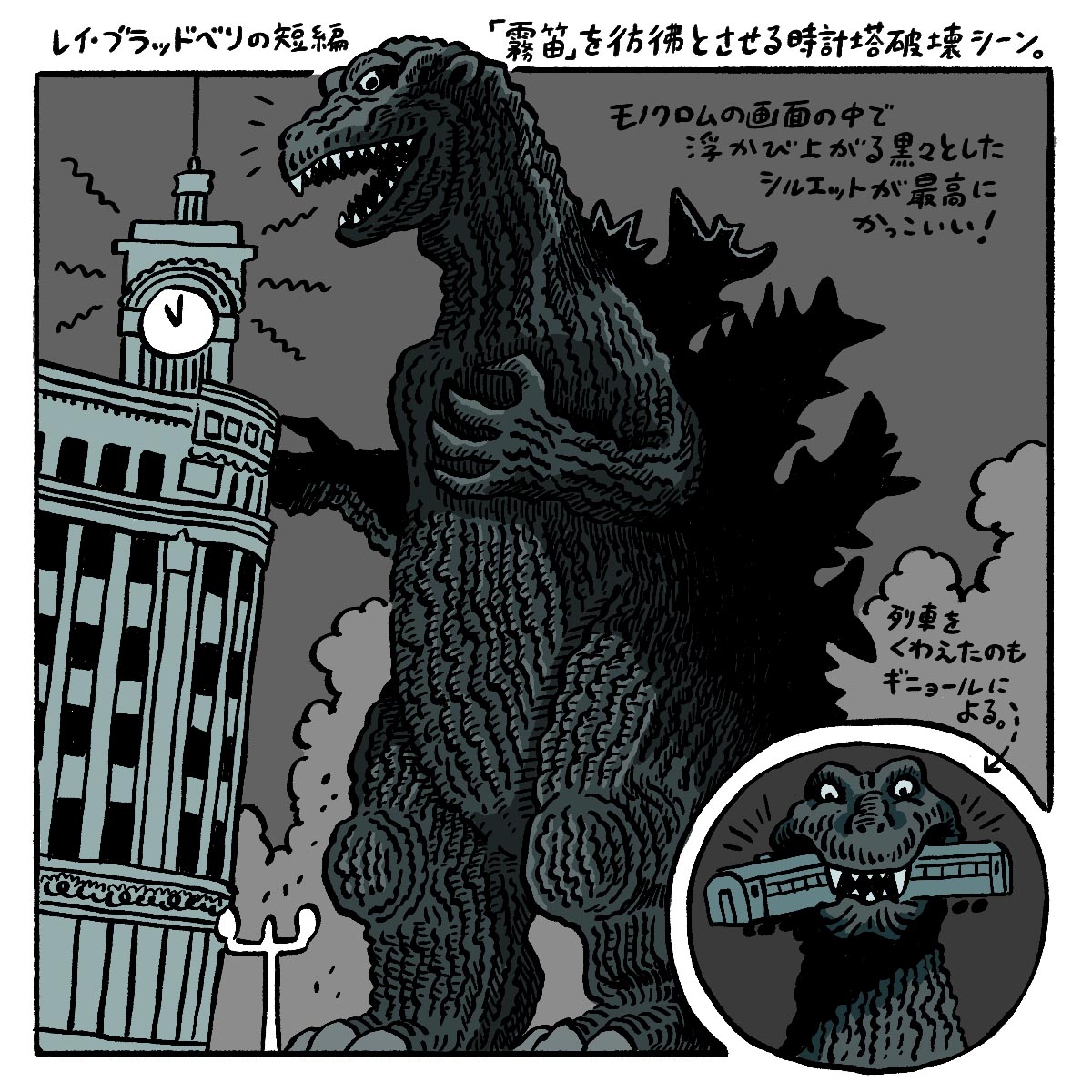!["Godzilla" The first work that stands out as the origin [Mizumaru Kawahara's CINEMONOLOGUE Vol.57]](https://cinemore.jp/images/00267d1f9ed72585befb9f0ed77adc42208efbdcd13584cc9573a745b9fc4e23.jpg)
"Godzilla" The first work that stands out as the origin [Mizumaru Kawahara's CINEMONOLOGUE Vol.57]
The invincible monster and the “foghorn” dinosaur

That said, there is nothing to complain about in the scene where the Tokyo attack is revealed, as the overall picture is revealed. The sluggish pace of the costume due to its weight makes it look like a gigantic creature is actually walking, and the way its black silhouette stands out among the monochrome colors is really cool. Its dorsal fin has a particularly sharp outline that resembles the ridgeline of a steep mountain, and it is interesting to see that it glows white when it emits heat rays. I think they put a lot of thought into how to create an impact within the monochrome style.
Of course I like the way it lights up its dorsal fin and spits out heat rays, but my favorite attack scene is the one at the clock tower of the Ginza Wako Building. When Godzilla hears the clock tower's time signal, he makes a slightly strange sound to threaten it, but at this time, it is Guignol who is also confronting the clock tower. Godzilla gets angry and destroys the clock tower, but this series of scenes reminds me of a short story.
The short story ``The Foghorn'' by science fiction master Ray Bradbury is about a group of surviving dinosaurs who live in the sea and come to the story thinking that the sound of a lighthouse's foghorn is the voice of one of their friends. In the end, the dinosaur is disappointed and angry at the identity of the "voice" and collapses the lighthouse, leaving the lighthouse keeper running for his life. That alone has similarities to the scene between Godzilla and the clock tower, but that's not the only thing that connects Godzilla and this dinosaur.
This short story was made into a special effects film titled " Atomic Monster Appears " in 1953, the year before "Godzilla" was released, and was adapted into a story in which the dinosaur in question was awakened from its slumber by a nuclear test. Furthermore, the development is that they will not only attack the lighthouse but also attack New York. The heartbreaking backdrop of a lonely dinosaur in search of a companion adds depth to the story, which was, of course, one of the inspirations for Godzilla. I'm kind of happy to know that Godzilla is connected to my favorite Bradbury short story.
After all, ``Godzilla'' seems to be closer to these kinds of horror novels and classic works than to later monster movies (though it's only natural that ``Godzilla'' itself is a classic). It depicts the fear of mysterious Monster and the fear of science that is reaching into unknown territory, and the story of modern civilization being attacked by beings that have existed since ancient times made me fall in love with Mary Shelley's " Frankenstein ," Bram Stoker's " Dracula the Vampire ," and Universal's film adaptations of them. Similar to ``Godzilla,'' these works depict horrifying yet heartbreaking Monster on monochrome screens. Before being a monster, Godzilla may also be a friend of these monsters.
There are no Monster without humans

